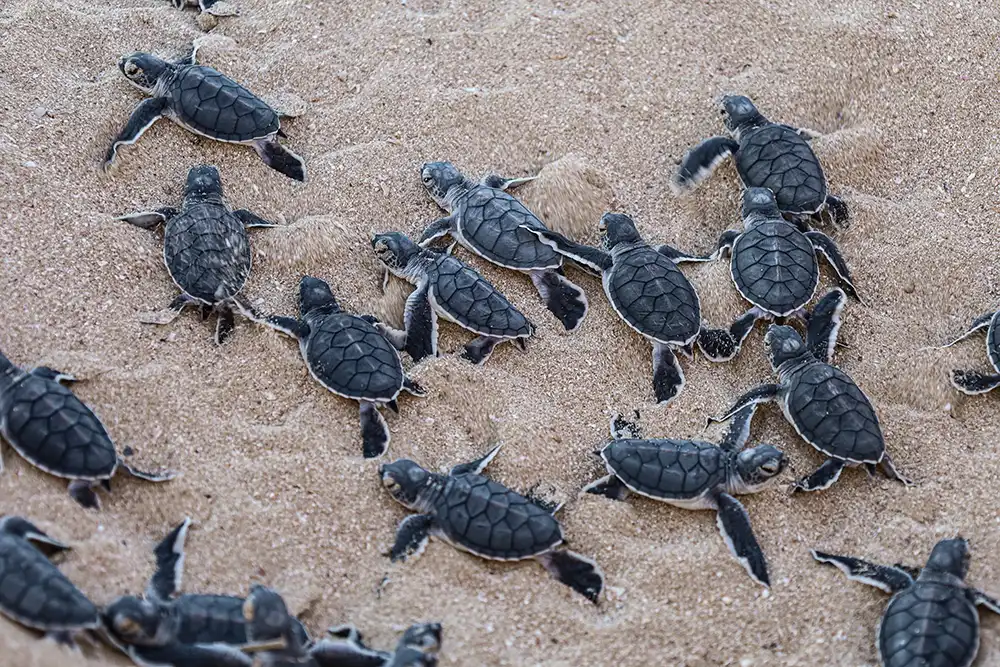
Green turtle populations have recovered so successfully that their official status has been downgraded from ‘Endangered’ to ‘Least Concern’ by the IUCN Red List of Threatened Species.
Green turtles (Chelonia mydas) have declined in numbers by between 48 to 67 per cent over the last 200 years, largely due to human influences such as fisheries bycatch, loss and degradation of nesting sites and foraging areas, and the direct take of green turtles for their eggs, shells, and meat.
In some locations, particularly islands in the Caribbean, Costa Rica and Seychelles, Green turtles were hunted to the brink of extinction as a replacement for cattle – both for their meat and for their hides, which were tanned into a form of leather.
The species is slow to reproduce, reaching sexual maturity at an estimated 26 to 40 years of age. Although a female can lay 200 eggs per nest, just one per cent of her offspring will survive long enough to reproduce themselves.
The latest assessment found that green turtle populations have recovered by 28 per cent over historical counts made during the 1970s and ’80s (one assessment from the West Pacific Ocean dates back to 1933), with an estimated 538,763 clutches of eggs laid during 2024.
While the news is undoubtedly positive, the IUCN assessors note that global populations may be ‘at least two orders of magnitude’ lower than they once were.
Conservation success story

The rebound of green turtles – and other turtle species – is a success story for conservation.
Green turtles are listed under Appendix 1 of the Convention on International Trade in Endangered Species (CITES), which severely restricts trade in turtle products, but a 2022 study also found that, overall, public interest in turtle exploitation has waned over the years, in large part thanks to scuba diving and other forms of marine tourism and their associated conservation campaigns.
The fishing industry has been using turtle excluder devices (TEDs) since the late ’80s after the US made it mandatory for its shrimp trawling boats, and the practice – in which a metal grid at the opening of a trawl net prevents turtles and other large animals from becoming trapped within it – has been widely adopted by commercial fishers worldwide.
In other locations, measures to protect turtle nesting areas from poaching have been implemented, and specialist turtle hatcheries have been created to prevent hatchlings being predated before they are able to reach the ocean.
Although the overall news is good, three of the 11 populations of green turtle are still in decline, with populations in the East Pacific Ocean and North Indian Ocean having almost halved over the last fifty years.
Nevertheless, the rebound in green turtle numbers – and other turtle species – is a clear demonstration of what can be achieved through long-term collaborative conservation efforts.
‘The ongoing global recovery of the green turtle is a powerful example of what coordinated global conservation, over decades, can achieve to stabilise and even restore populations of long-lived marine species,’ said Roderic Mast, Co-Chair of the IUCN Turtle Specialist Group.
‘Sea turtles cannot survive without healthy oceans and coasts, and humans can’t either. Sustained conservation efforts are key to assuring that this recovery lasts.’


